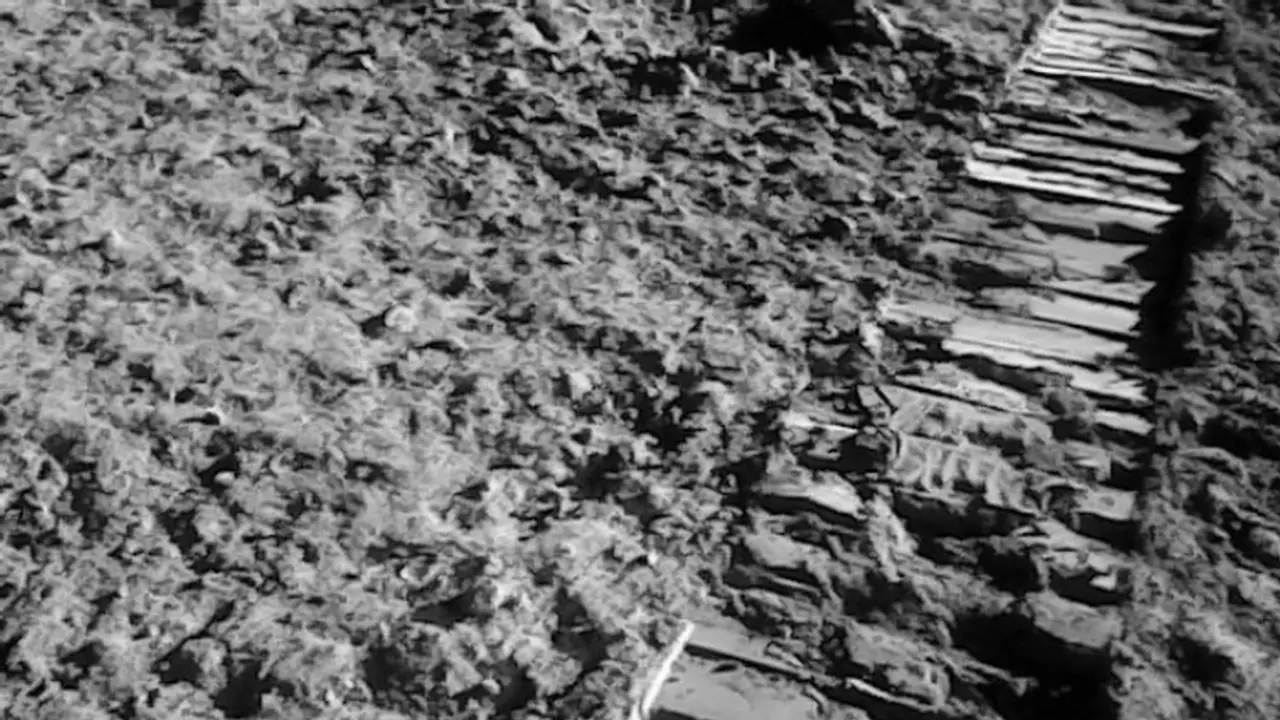India's Chandrayaan-3 mission has achieved a significant milestone by detecting over 250 seismic signals in the Moon's south polar region, with 50 of these signals potentially linked to Moonquakes. This marks the first collection of seismic data from the Moon’s southern polar region and the first lunar seismic data since the Apollo missions.
In a series of groundbreaking achievements, India's Chandrayaan-3 mission has identified over 250 seismic signals in the Moon's south polar region. Among these, 50 distinct signals appear unrelated to the rover Pragyan's movement or the operation of other instruments and may be associated with Moonquakes.
This represents the first time seismic data has been collected from the Moon’s southern polar region and the first seismic data from the lunar surface since the Apollo missions. The experiment was carried out by the Instrument for Lunar Seismic Activity (ILSA), a scientific instrument on the Vikram lander, at the landing site located at 69.37° South and 32.32° East.

Operating for 190 hours from August 24 to September 4, 2023, the Instrument for Lunar Seismic Activity (ILSA) is the first device to measure ground accelerations from the Moon’s south polar region. It is also the first lunar instrument to use sensors manufactured with silicon micromachining technology. The results have been analyzed and published by a team of ISRO researchers in ICARUS, a scientific journal specializing in planetary science.
The paper has been published by J John, V Thamarai, Teena Choudhary, MN Srinivasa, Ashwini Jambhalikar, MS Giridhar, Madan Mohan Mehra, Mayank Garg, KV Shila, Krishna Kummari, SP Karantha, Kalpana Arvind, and KV Sriram, all from ISRO’s Laboratory for Electro-Optics Systems (LEOS) in Peenya, Bengaluru.
“Of the more than 250 seismic events recorded, approximately 200 signals correlate to known activities involving Pragyan’s movements or the operation of scientific instruments, the 50 others do not have any explanation. There needs to be further studies to understand what may have caused these activities," said LEOS director Sriram as quoted by Times of India.
Ganesh Chaturthi special: Learn the history and significance of the festival
Researchers note that the most extended and relatively large amplitude records from ILSA are those associated with Pragyan’s navigation. The longest continuous signal recorded lasted for 14 minutes. Approximately 60 signals cataloged are related to Pragyan’s movement, which was controlled by ground commands. The rover, weighing about 25 kg and equipped with six wheels driven by motors, moved at a typical speed of 1 cm per second. The rover's dynamics and the interaction between its wheels and the lunar soil generated complex ground vibrations that were captured by ILSA.
Researchers also stated that events classified as deep or shallow quakes were beyond the intended objectives and design specifications of ILSA. They acknowledged that the likelihood of such events occurring during the instrument's one lunar day of operation was very low.
However, the data analysed in the paper reveal approximately 50 instances where the amplitude of the instrument's output significantly deviates from the normal background level.
“From the mission command history, it was confirmed that any activity that can cause ground vibration was not performed during this timeframe,” the paper reads.
As a result, researchers categorized these occurrences as 'uncorrelated events.' Among the 50 such events, some signals exhibited a peak-to-peak amplitude as high as 700 μg.
“The frequency content in the signals is spread over a wide range up to 50 Hz. The signals discussed here lasted only for a few seconds. Although several distinct signals lasting less than a couple of seconds are also observed, they are not included in the count reported in this paper,” the paper read.
